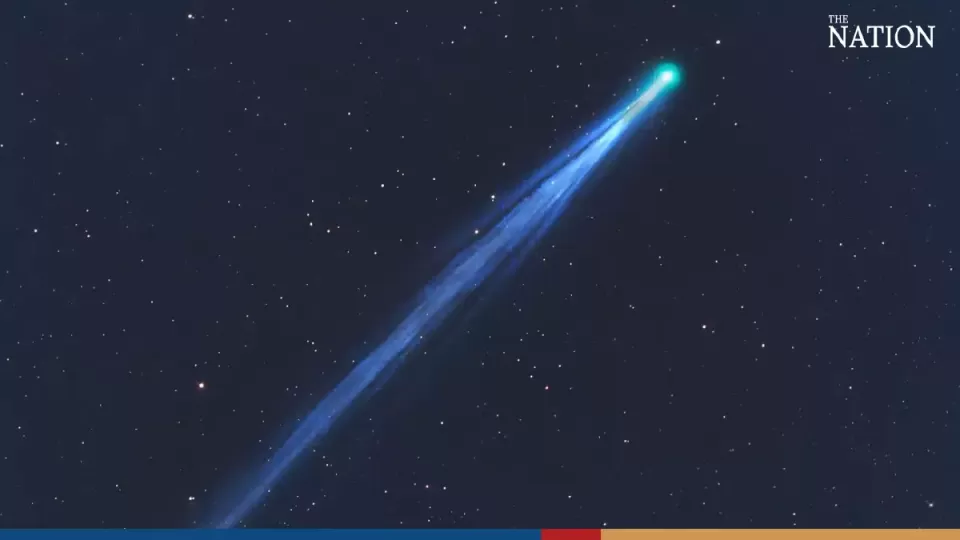September 11, 2023
BANGKOK – A once-in-a-lifetime celestial event is on the horizon as Comet Nishimura, officially designated C/2023 P1 (Nishimura), graces the night sky next week, delighting astronomers and stargazers.
The National Astronomical Research Institute of Thailand (NARIT) has meticulously mapped out a timetable to witness this cosmic spectacle.
Discovered a few weeks ago by Japanese astronomer Hideo Nishimura, the comet has swiftly become a sensation in the world of astronomy. It is hurtling towards its closest encounter with Earth on Tuesday (September 12), though it will reach its true splendour on September 17, when it will shine at its brightest.
What makes this celestial phenomenon particularly remarkable is that you won’t need sophisticated equipment to witness it – the naked eye will suffice.
The journey of the comet was revealed when dedicated Japanese astronomer Nishimura trained his lens towards the heavens in the early hours of August 11.
To his amazement, he spotted an enigmatic object among the stars in the Gemini constellation. Subsequent observations confirmed that this was indeed an undiscovered comet, marked by its slight positional shift.
Nishimura promptly reported his discovery to the Minor Planet Centre, the official body responsible for validating such celestial findings in our solar system.
On August 15, the discovery was officially recognised and the comet was named C/2023 P1 (Nishimura). Originating from the Oort Cloud and boasting a remarkable orbital period of 437 years, it is now making its way towards Earth and the Sun, becoming increasingly conspicuous by the day.
The Comet Observation Database (COBS) expects the Nishimura Comet to exhibit an apparent magnitude of up to 3.0, making it comfortably visible to the naked eye.
For those eager to catch a glimpse of Comet Nishimura, here are the key celestial dates to mark in your calendar:
September 8: Just before sunrise, the comet will be visible in proximity to the Leo constellation, nestled close to Regulus, at an angle of approximately 20 degrees from our solar star. This grants a precious one-hour window for observation. As per the latest data, the comet will display an apparent magnitude of 5.2, rendering it visible to the naked eye in regions with minimal light pollution.
September 12: This is the day the comet will be closest to the Earth, a thrilling moment in its celestial journey. At a mere distance of 125 million kilometres, it will be the closest it can get, though its close proximity to the Sun may make observation challenging.
September 17: A grand finale awaits stargazers as the Nishimura Comet shines brightly in the western evening sky. With an angular separation of approximately 10 degrees from the Sun, it will grace the Virgo constellation. Stargazers will have nearly an hour for observation before it retreats towards the horizon and disappears from view. From this point on, the comet will gradually recede from both Earth and the Sun, eventually vanishing only to return in over 400 years.


